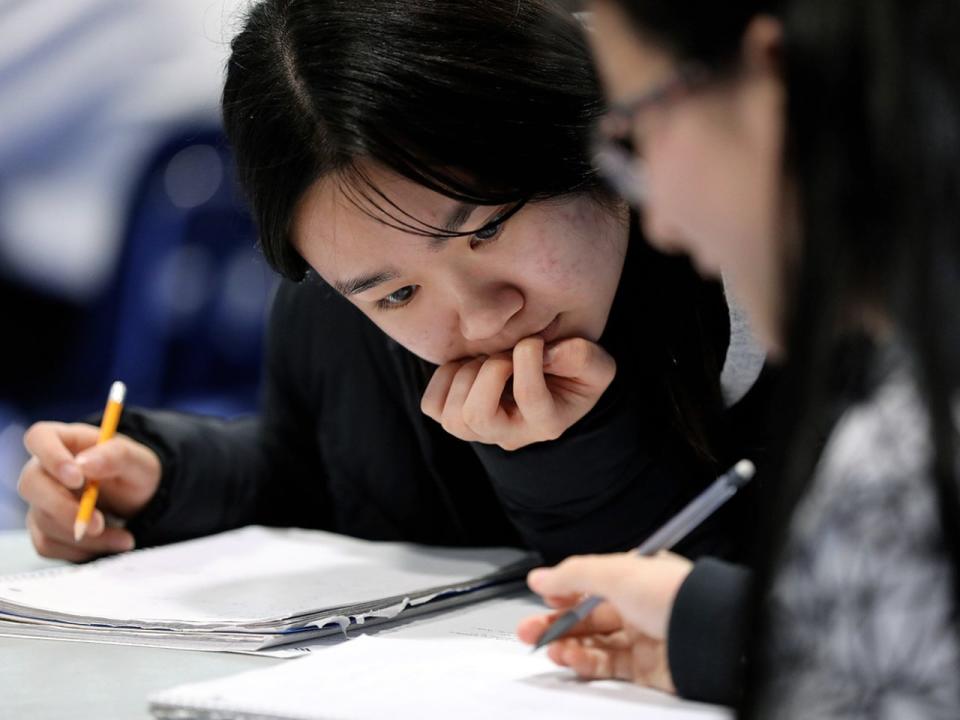Opinion: Alberta shows more money is not the answer for schools

By Michael Zwaagstra
In case you didn’t already know, higher spending on schools doesn’t necessarily produce better student outcomes. Just look at what’s happening in Alberta.
According to Statistics Canada, from 2012-13 to 2021-22 (the latest year for which data are available) per-student spending in Alberta increased by 2.1 per cent — from $13,146 to $13,421. After adjusting for inflation, that’s a 17.2-per cent spending reduction.
This stands in sharp contrast to most other provinces. Over the same 10 years, inflation-adjusted per-student spending increased in Quebec (by 24.6 per cent), British Columbia (5.1 per cent) and Ontario (0.5 per cent). By the raw numbers, Alberta now spends less per student than any other province.
The results?
According to the latest Programme for International Student Assessment (PISA) tests, Alberta students scored second only to Quebec on their math skills and almost half a grade level ahead of their peers in B.C. (even though B.C. spent $1,468 more per student in 2021-22). Even better, Alberta students scored highest in the country on their PISA reading and science assessments. This is exactly the opposite of what we’d expect if less spending hurt student performance.
Of course, this doesn’t mean money is irrelevant. In countries that spend considerably less on education than Canada, more spending does correlate with better academic results. Excessive teacher turnover harms student learning: students must be in a stable learning environment to excel. If teachers aren’t paid enough to make a decent living, they will not remain in the profession and students will suffer.
In Canada, however, things are different: all provinces already spend a significant amount on education. They’re all past the stage where more money will help. Rather than simply pour more money into the education system, Canadian governments need to spend wisely.
Because Alberta is a top-performing province, it’s worth asking what makes it different. Simply put, Albertans have more educational choice than people in any other province. Not only does the province have fully-funded public and separate school systems, it provides accredited independent schools per-student grants equal to 70 per cent of what’s available to public schools, which makes it easier for such schools to keep tuition affordable for parents. And Alberta is the only province to allow charter schools — fully-government-funded schools that operate independently from government school boards. This makes it easier for charter schools to offer specialized programming based on parental demand. It also creates an incentive for government school boards to diversify their programming options.
Alberta also has rigorous standardized testing. In sixth and ninth grades, students write provincial achievement tests in English language arts, math, science and social studies. Meanwhile, Grade 12 students write diploma exams worth 30 per cent of their final mark in a variety of courses. These tests and exams play an important role in holding schools accountable.
But before Alberta politicians get too comfortable, it’s important to note that despite its relative success compared to other provinces, Alberta saw a significant decline in academic achievement over the last 20 years. The latest PISA tests show Alberta students scored 45 points lower in math skills in 2022 than in 2003, which is similar to what happened in other provinces. Twenty PISA points is about one grade level, which means that on average Alberta students are roughly two years behind where their math skills were in 2003.
Getting to the root cause of this decline will take considerable effort. But one thing we know for sure: simply spending more money will not solve the problem. As another school year begins, policy-makers in Alberta and across the country need to keep that in mind.
Financial Post
Michael Zwaagstra, senior fellow with the Fraser Institute, is a public high school teacher.
Bookmark our website and support our journalism: Don’t miss the business news you need to know — add financialpost.com to your bookmarks and sign up for our newsletters here.

 Yahoo Finance
Yahoo Finance 